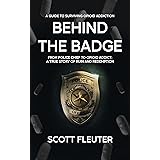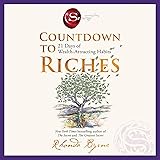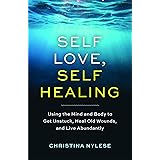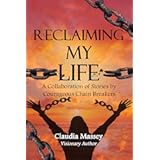Have you ever felt like a character in a play, reacting to external cues without truly understanding your own script? Many of us navigate life, making decisions and responding to situations, often driven by unseen forces beneath the surface. It’s a bit like driving a high-performance vehicle for years, mastering the controls, but never once popping the hood to understand the engine’s intricate dance. The video above, from Rob Dial’s Mindset Mentor Podcast, brilliantly tackles this universal human experience, asserting that a profound journey into our inner workings—a journey of self-awareness—is the ultimate superpower.
Rob frequently champions self-awareness as the cornerstone of personal transformation, a theme resonating deeply across his work. He provocatively suggests that if everyone possessed extreme self-awareness, many of the world’s problems would simply dissolve. This isn’t just wishful thinking; it’s a recognition that understanding our motivations, emotions, and impact on others fundamentally reshapes our interactions and reality. True self-awareness acts as a compass, guiding us through the complexities of our psychological landscape.
Beyond the Surface: Distinguishing Self-Awareness from Self-Consciousness
Before truly embarking on this quest, it’s vital to differentiate between self-awareness and its often-confused cousin, self-consciousness. As Rob meticulously explains, self-awareness involves the objective recognition and understanding of your emotions, motivations, thoughts, feelings, and behaviors. It’s an internal mirror, reflecting your true essence without judgment. This involves developing a clear perception of your personality, strengths, weaknesses, and even the indelible marks left by past traumas and relationships.
In contrast, self-consciousness represents an excessive or acute awareness of oneself, particularly concerning how others perceive you. While a modest degree can promote appropriate social behavior, an overabundance can morph into discomfort, unease, embarrassment, and even social anxiety. It’s the difference between inspecting your vehicle’s engine to optimize its performance and constantly worrying if passersby approve of its paint job. The former empowers, while the latter can be debilitating, preventing the authentic expression of your true self.
The Profound Impact of Cultivating Deeper Self-Awareness
Why invest the energy in truly “learning yourself,” a process Rob distinguishes from merely “knowing yourself” (which is rooted in the past)? The dividends are substantial, reaching into every facet of existence. Developing robust self-awareness acts as a foundational element for personal mastery, akin to an athlete honing their core strength before excelling in their sport.
Enhanced Emotional Regulation and Resilience
One of the most immediate benefits of heightened self-awareness is an improved capacity for emotional regulation. When you understand the genesis of your emotions—the thoughts and experiences that trigger them—you gain agency over your responses. It moves beyond simply pushing feelings down; it involves processing them, understanding their messages, and choosing how to react rather than being swept away. This introspective capacity even allows for emotional anticipation, enabling proactive choices to navigate or even circumvent potentially overwhelming situations, fostering greater psychological resilience.
Sharper Decision-Making and Goal Alignment
Self-awareness also acts as a powerful lens for decision-making, cutting through internal noise to reveal true desires and motivations. When you grasp your core values, strengths, and weaknesses, your choices become more aligned with your authentic self, leading to more fulfilling outcomes. This isn’t just about making “better” decisions, but making decisions that resonate with your internal compass, minimizing regret and maximizing personal satisfaction. It’s like a sculptor who understands the grain of the wood, allowing them to carve with precision and purpose.
Fostering More Fulfilling Relationships
Beyond the individual, self-awareness profoundly impacts interpersonal connections. Understanding your own behavioral patterns, communication styles, and emotional triggers enables you to better understand and empathize with others. When you recognize how your actions influence those around you, you can cultivate more harmonious, genuine, and reciprocal relationships. This mutual understanding forms the bedrock of deeper bonds, transforming interactions from superficial exchanges into meaningful collaborations.
Pathways to Profound Self-Discovery: Reflective Practices and Introspection
The journey toward profound self-awareness, while abstract, is forged through concrete practices. Rob outlines several powerful techniques that serve as internal navigational tools, guiding us deeper into our own consciousness.
The Power of the Pen: Journaling as a Cognitive Catalyst
Journaling is far more than a casual recounting of daily events; it’s a potent reflective practice for excavating the subconscious mind. Rob highlights that only about 5% of our thoughts are conscious, leaving a staggering 95% operating beneath the surface—our “programming.” Trying to untangle this complex web solely in your head is like attempting advanced calculus without paper; it’s overwhelming and often impossible. Journaling externalizes these internal processes, allowing you to observe, question, and analyze them from a detached perspective.
To journal effectively, consider posing specific questions to yourself and then writing stream-of-consciousness answers. Questions like, “Why am I feeling this surge of frustration?” or “What core belief is driving this reaction?” transform the act into a powerful diagnostic tool. This practice unearths hidden patterns, biases, and motivations, allowing you to challenge and reprogram old narratives that no longer serve your growth. It’s like being your own therapist, guiding yourself through internal dialogues.
Stillness and Observation: The Art of Meditation
Meditation, often misconstrued as an attempt to silence the mind, is in fact about cultivating an observational stance toward your thoughts. Rob recounts a profound insight from a monk in Chiang Mai, Thailand, who stated, “Meditation is not about having no thoughts. Meditation is about watching your thoughts.” This distinction is crucial; it liberates practitioners from the futile struggle against an active mind and reframes meditation as a powerful self-diagnostic practice.
By simply observing the incessant flow of thoughts, without judgment or attachment, you begin to understand your mind’s baseline state throughout the day. If your mind is chaotic during meditation, it’s likely chaotic constantly. This practice fosters a heightened awareness of internal states, allowing for greater peace and clarity over time. It’s akin to a scientist observing a complex system in a controlled environment to understand its natural behavior.
Decoding Your Internal Dialogue: Thoughts and Feelings as Guides
Becoming attuned to your thoughts and feelings is a fundamental aspect of self-awareness. Often, a strong emotion is preceded by a specific thought. As cognitive behavioral therapy (CBT) suggests, asking “What was I just thinking?” when an emotion arises can reveal the underlying cognitive pattern. This practice illuminates the cause-and-effect relationship between your internal narrative and your emotional state.
Rob powerfully describes “triggers” as gifts—signals from the universe revealing areas where we are not free. When an external event or person evokes a strong, often disproportionate, reaction within you, it’s an invitation for introspection. Instead of blaming the external stimulus, ask “Why was I triggered?” and “What part of my programming or unresolved self is being reflected here?” These moments offer invaluable opportunities for growth, showing where internal work is most needed. A trigger is not an assault; it is an alarm bell indicating a valuable lesson waiting to be learned.
Challenging Your Blueprint: Examining Core Beliefs for Authentic Growth
Our beliefs form the very blueprint of our reality, shaping perceptions, decisions, and reactions. Yet, as Rob points out, many of these beliefs are not consciously chosen but are rather a blend of cultural upbringing, personal experiences, traumas, societal norms, religion, and family programming. They provide a worldview but can also be incredibly limiting, like an outdated operating system slowing down a powerful computer. The final, and perhaps most transformative, step in cultivating self-awareness is to challenge these deeply ingrained beliefs.
To embark on this challenging process, identify a core belief you hold—it could be about money, relationships, capability, or identity. Then, rigorously apply three probing questions: First, “Where did I learn this belief?” Trace its origin to parents, teachers, media, or significant life events. Second, “Is this my belief or one that was programmed into me?” Distinguish between inherited dogma and genuinely adopted wisdom. Finally, and most crucially, “From this moment forward, what do I choose to believe?” This question empowers you to consciously redesign your internal operating system, discarding beliefs that no longer serve your authentic growth and embracing those that propel you forward.
This systematic interrogation of beliefs allows for true self-ownership. For example, if you hold the belief that “money is the root of all evil,” trace its origin. Perhaps it stemmed from witnessing financial struggles or hearing cautionary tales. Was it programmed? Likely, yes. Now, choose: does this belief align with the person you aspire to be? Recognizing that money, like any tool, can be used for good or ill—funding charitable causes, fostering innovation—might lead you to release this limiting belief, replacing it with one that allows for abundance and positive impact. The journey of self-awareness is a continuous process of refining this internal landscape, moving from merely knowing who you were to actively learning and becoming who you are meant to be.








